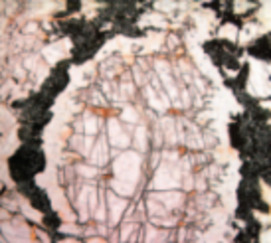Using Equilibrium Thermodynamics to Understand Metamorphism and Metamorphic Rocks
Metamorphic rocks, formed at elevated temperature and pressure from pre-existing rocks inside mountain belts, provide a seemingly unpromising target for the application of equilibrium thermodynamics. This is because metamorphic rocks develop their mineral assemblages along a pressure–temperature (P–T) path, with pressure and temperature continuously changing along the path. However, in a successful model for the formation of such rocks, involving the essential role of fluid or melt, the mineral assemblages observed at the Earth’s surface can be considered to reflect a state of frozen-in equilibrium as the rocks are exhumed towards the Earth’s surface. Equilibrium thermodynamics applied to such mineral assemblages allow P–T information to be extracted. Currently the best way to do this is via calculated phase diagrams, the most powerful being P–T pseudosections. These diagrams portray the variation of mineral assemblages with P–T for a specified rock composition. Pseudosections allow the P–T conditions of the frozen-in equilibrium to be estimated, and can also give information on the P–T path followed. Such paths are an essential input in constraining the processes involved in mountain-building and the evolution of continental crust.
Using Equilibrium Thermodynamics to Understand Metamorphism and Metamorphic Rocks Read More »


